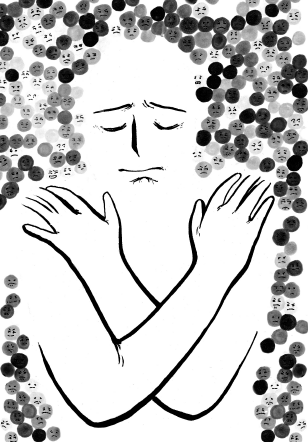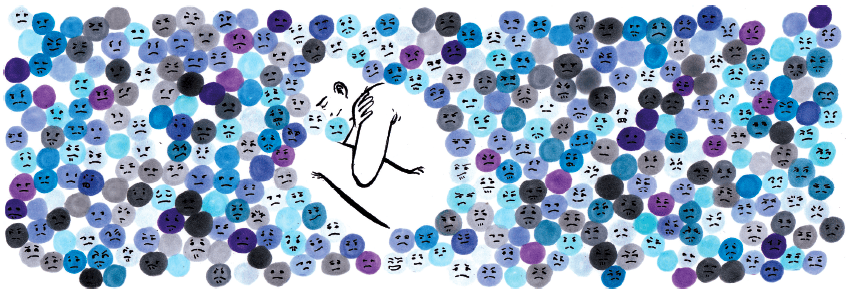Stigmas have affected culture throughout history, segregating individuals viewed as abnormal. There is, however, a certain poetic nature in how different stigmas have been eradicated over time. Next on the list could be mental disorders.
Canadian actor Eric McCormack conveyed this message brilliantly when he wrote, “Mental illness is the last frontier. The gay thing is part of everyday life now on a show like Modern Family, but mental illness is still full of stigma. Maybe it is time for that to change.”
Last year, as part of the university’s commitment to creating a healthy campus, the university launched the York U Let’s Talk Mental Health event in conjunction with Bell’s Let’s Talk Day.
“With Health Canada statistics stating that one in five Canadians will experience a form of mental illness at some point in their lives, mental health is an increasing concern for all universities, as a place of learning and work,” stated Professor Lesley Beagrie, a member of the Faculty of Health, in a press release.
According to Statistics Canada, the age group most affected by issues of mental health are those between 15 to 24, which makes it an extremely prevalent issue at any university.
Beagrie said, “York U Let’s Talk Mental Health will provide an opportunity for our community to share their thoughts on what a mentally healthy campus would look like.”
People diagnosed with a mental health condition can be forced to live in silence and without adequate support.

In fact, the Centre for Addiction and Mental Health (CAMH) reports that only half of people diagnosed with a mental disorder would tell friends or coworkers—a significantly smaller number than those who would discuss a cancer diagnosis (72 per cent).
Some people are forced to quit their jobs or are terminated; persistent mental illnesses, such as schizophrenia, equate to an unemployment rate of up to 90 per cent.
Others can be abandoned by family and friends as a result of their diagnosis. Two out of five people state they would be unsure about socializing with a mentally ill friend, according to CAMH.
Kismet Baun, senior communications advisor at CAMH, illustrates how public perceptions are inaccurate in her article “Stigma Matters: The Media’s Impact on Public Perceptions of Mental Illness.”
Mainstream media, both the news and entertainment, according to Baun, “skew reality” when it comes to mental illness.
Mass-murdering “lunatics” have been a common villain in Hollywood films since 1960s’ Psycho, enforcing a concept of the mentally ill as unpredictable, malicious, and irrational. Virtually every slasher film and thriller, from The Shining to The Dark Knight has followed the trend.
“Mistaken and negative depictions perpetuate the public’s damning image of people with mental illness and perpetuate continued intolerance and oppression,” wrote Baun.
“Such distorted and negative associations are woven so deeply into the fabric of the public consciousness that sensationalism need no longer occur for the public to equate mental illness with violence.”
If mental conditions aren’t being used to strike fear, they’re instead used for laughs (Analyze This), romanticized sexiness (Suckerpunch and Girl, Interrupted), or the ever-common plot twist that it was all an act (Primal Fear).
The stigmatization of consumers of mental health services in mass media is a serious problem that mental health organizations are constantly trying to solve.
Stigma affects the entire family, not only the person who has been diagnosed.
“Family members of an individual living with schizophrenia or depression experience ‘courtesy stigma’ when they are devalued because of their association with the affected family member,” says Irina Sytcheva, manager of policy and community relations for the Schizophrenia Society of Ontario.
“For example, parents of a child with schizophrenia may be considered ‘bad parents’ simply because their child lives with schizophrenia. The siblings may lose friends who stop coming to their home, or their classmates may whisper about their family.”
“Other relatives may reduce how often they associate with the family because they are now considered a ‘problem’ family. In some cultures, the siblings may have a hard time attracting suitable marriage partners.”
For a diverse campus like York, stigma is expressed in different ways. It can be difficult to measure how much stigma exists in a specific culture, compared to another, or how dealing with stigma in different cultures should be addressed.
No such data exists. For a study of this scale, there would need to be surveys distributed in different cultural groups, and there would need to be an account of different variables such as income, age, and education.
The SSO is undertaking a study on racialized youth and mental illness stigma, specifically analyzing how stigma differs across different ethno-racial communities in the GTA.
Whatever the exact facts and figures, it’s clear that mental illnesses are the subject of an unspoken stigma in our society.
However, the York U Let’s Talk Mental Health event is just one of many movements suggesting that we could be breaking down the final frontier.
Ryan Moore
Contributor



